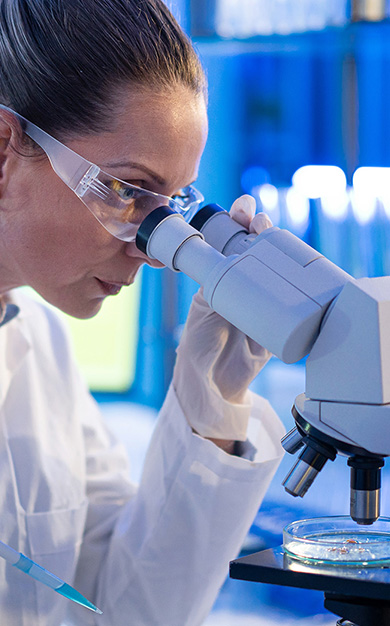A More Fruitful Union: Marrying Human Brains with Computers
Written By: BrightFocus Editorial Staff
Written By: BrightFocus Editorial Staff
Q. You’ve been passionate about both artificial intelligence and human intelligence. What are the strengths and limitations of each, and how do you envision combining them to achieve great things?
A. Machines are fundamentally number crunchers. They are best at counting, keeping track of things, and following a set of predefined steps. Artificial Intelligence (AI) is about using these number crunching abilities as building blocks for creating humanlike intelligence. Although AI continues to make steady progress, there are still many things that humans do better than machines. For this reason, I believe our best opportunity today for solving tough problems comes from strategically combining the respective strengths of machine and human intelligence.
Humans continue to excel at creativity, abstraction, and applying world knowledge to solving problems. So a natural partnership between humans and machines involves letting the humans do the creative problem solving and letting machines manage the administrative tasks and run the math formulas.
One reason humans may do better than machines in Stall Catchers is that our visual system is influenced by our reasoning system – the two are tightly intertwined. Making an accurate judgment isn’t just about noticing visual patterns on the screen; it is about interpreting what they mean.
Another benefit of AI is that if we can get machines to behave in humanlike ways, even if they aren’t quite as a good as a human, they can substantially reduce our workload. In fact, this is our approach for the new game. We are training a neural network to give us the best possible starting point and then letting humans do the remainder. Imagine working on a jigsaw puzzle that comes with most of the pieces already put together. If the AI can do 80% of the work, then we have reduced the human workload by a factor of 5. Over time, we can also use the human-generated data to teach the AI system to be smarter, further reducing the need for human labor and speeding up the research.
Q. Is this approach particularly suited for problems with multiple causes, like climate change, or Alzheimer’s disease?
A. Absolutely! The world is a system of systems. Some of the most challenging problems of our time, like climate change, geopolitical conflict, and pandemic disease are multifaceted and influenced by many interdependent systems. How could any one person or even a group of people hope to understand all of the economic, social, and biological effects of a prospective climate change solution? But what if we developed a system that would allow millions of people from different backgrounds to go online and build a working model of the world? Then another million people could use that model to test out different ideas and see all the trickle-down effects before trying them out in the real world. And with more sensors getting connected to the Internet every day, our collective model could become an increasingly real time, faithful representation of the world. Professor Dickinson and I wrote about this idea for the journal Science last year, to try to bring this perspective to the broader scientific community.
BrightFocus Foundation is a premier global nonprofit funder of research to defeat Alzheimer’s, macular degeneration, and glaucoma. Since its inception more than 50 years ago, BrightFocus and its flagship research programs—Alzheimer’s Disease Research, Macular Degeneration Research, and National Glaucoma Research—has awarded more than $300 million in research grants to scientists around the world, catalyzing thousands of scientific breakthroughs, life-enhancing treatments, and diagnostic tools. We also share the latest research findings, expert information, and resources to empower the millions impacted by these devastating diseases. Learn more at brightfocus.org.
Disclaimer: The information provided here is a public service of BrightFocus Foundation and is not intended to constitute medical advice. Please consult your physician for personalized medical, dietary, and/or exercise advice. Any medications or supplements should only be taken under medical supervision. BrightFocus Foundation does not endorse any medical products or therapies.
Every Donation is a Step Forward in the Fight Against Alzheimer’s
Your donation powers cutting-edge research and helps scientists explore new treatments. Help bring us closer to a cure and provide valuable information to the public.
Donate Today